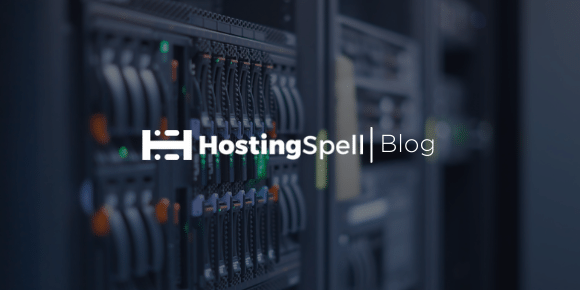Hi, I’m Dhruv from HostingSpell, I’ve been working with cPanel and Linux Environments for 5 Years. Here I’m listing some of the best things you should do as soon as possible when you receive your cPanel details, it’s before you upload or deploy your website or create it online in the first place.
cPanel is known for its user-friendly UI and some extra features which 90% of user don’t use! It’s funny as well as strange. However, the main features should be used effectively so you can get the most out of your cPanel Hosting.
To start
As soon as you receive cPanel details, don’t just jump into it and start messing things around! It’s a bad way! When you receive cPanel Login details in the first place don’t just log in and start work but explore Email by Host itself first, read full email maybe you’ll find something that worth noticing. After that visit your client area and explore it for any goodies you can within your cPanel or Client Area. By doing that you are enabling extra features from the host before you start, Why it’s required? I’ll explain it later in this article.
In our case at HostingSpell.com, you can add SiteLock Lite which is free and better to have.
After you have done this so far, you are ready to jump into cPanel, Add Credentials and Hit Login! As soon as possible you enter checkout whole cPanel one by one with tabs. Find of there is anything that appears to be new. Search for it on Google or ask Hosting Provider how you can take benefit of that strange thing!
Before you start working for deployment or Making something horrible enough to show it online! Change or modify things you need in order to enable it before you start working. It will help you at the end because enabling such things before deployment can be easy while after you start working and change things later, it will break a thing or two! Even if you are sure it won’t! Still, Change or modify it before you start.
Things like mentioned below can be beneficiary if you change/modify settings before start working.
Topics:
- Nameservers and Records.
- Let’s Encrypt SSL or any other SSL Certificate.
- NGINX or Apache Web Server Configuration.
- For NGINX Configuration
- For Apache Configuration
- Php Configuration
- The Rest is Kickstart!
Nameservers and Records.
A noobie doesn’t even forget to change Nameservers, it can be forgotten if you are fresh into this industry. It’s quite recommended to change your Nameservers from Side where you purchased your Domain Name, most probably Domain Registrar’s Control Panel. If you are new, don’t blend cPanel with Domain Control Panel, Both are different things! Go to Domain Panel or Domain Control Panel and Happily Change Nameservers before someone gives you a certificate of a noob. Ask our support team if you are new and don’t know what to do, it’s not shaming to be new 🙂
Let’s Encrypt SSL or any other SSL Certificate.
SSL is must and easily available within our cPanel for FREE! With just 2-3 clicks. Before applying SSL make sure your domain is pointing to your Web Hosting Server. Visit cPanel > Lets Encrypt and Select Domain and Press Issue button. That’s completely it with the case of Installing SSL. Now you have nothing left in this world for your website to call UnSSLed 🙂
However, If you have a paid an SSL Certificate and need to install it! Then Install it, You can use it to help out you.
NGINX or Apache Web Server Configuration.
With cPanel it’s left handwork for beginning, however, it’s a quite complex part of hosting dynamic sites. Initially select whether you want Apache or NGINX. However, our team recommends Nginx, it’s faster, lighter and better than Apache. That doesn’t mean Apache is useless! It’s Backbone of the World Wide Web and fundamentally required if you are an experienced developer and about to make a website that is known for great functionality.
For NGINX Configuration:
Go to cPanel and search for ClouDNS for cPanel ClouDNS Server Range, if you are on cPanel Int3rnet Server Range then find for AUTOM8N in cPanel. Go there and press Auto Configure Button with selected Domain. That’s doesn’t end here. Go to the next page to configure specific settings according to your needs. Don’t mess up here, if you don’t know the thing. Just Leave! That’s it for you, however, again, ask for our help for specific pieces of information 🙂
For Apache Configuration:
Well, You don’t need to configure anything here unless you are experienced developer and know what needs to be done, in that case, you will know how to configure settings, obviously! The reason is to not look into this section is because cPanel Server is by default built on Apache and your Hosting Server is well configured to fit in 🙂
Php Configuration:
After that, You have done all the technology tweaks, Now it’s time to tweak Php based on your usage. For example, you are going to host WordPress Website then you should upgrade your PHP version to the latest release. If you are launching any custom script then check the script’s requirements and set the PHP version according to that. also, cross-examine with plugins and addon scripts you are going to u, whether they support your fundamental requirements or not. You can do all this configuration part in cPanel > Select PHP Version or Php.ini/MultiPHP Manager.
The Rest is Kickstart!
Now you almost configured all of you prerequisite parameter to kickstart your website. Now the only thing left is to install WordPress, Upload Web Files or Launch Project. If anything left within the process then it won’t be hit or miss situation!
As always Happy Hosting 😉







Hi! Do you use Twitter? I’d like to follow you if
that would be okay. I’m undoubtedly enjoying your blog and look forward to new posts.